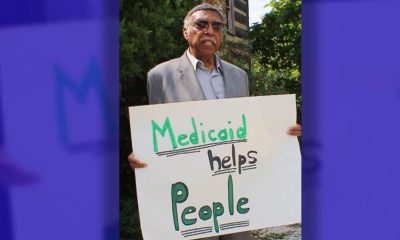Op-Ed
Child Watch: Protecting 50 Years of Child Health Progress
By Marian Wright Edelman
NNPA Columnist
“It was a generation ago that Harry Truman said, and I quote him: ‘Millions of our citizens do not now have a full measure of opportunity to achieve and to enjoy good health. Millions do not now have protection or security against the economic effects of sickness. And the time has now arrived for action to help them attain that opportunity and to help them get that protection.’ . . . The need for this action is plain; and it is so clear indeed that we marvel not simply at the passage of this bill, but what we marvel at is that it took so many years to pass it.”
President Lyndon B. Johnson said this as he signed Medicaid into law on July 30, 1965, thanking former President Harry S Truman and the many members of Congress from both parties who laid the groundwork and worked tirelessly to make the Medicaid program and its protections reality. Not only has Medicaid been a lifesaver for tens of millions of older Americans for 50 years, it has helped Americans of all ages, including millions of children. Together with the Children’s Health Insurance Program (CHIP) it has brought the number of uninsured children to a historic low.
Medicaid and CHIP provide comprehensive and affordable health coverage to more than 44 million children – 57 percent of all children in America. With the new coverage options offered by the Affordable Care Act (ACA), 93 percent of all children now have health coverage.
Yet, at a time when we should be celebrating Medicaid and CHIP successes, serious threats to Medicaid, CHIP, and the ACA continue to surface in Congress. So in addition to advocating for continuing improvements in children’s health coverage, we must also play defense to protect the hard earned gains made for children as well as adults.
The 2016 Budget Resolution passed by both the House and the Senate paves the way to radically restructure Medicaid, making deep cuts that will reverse the progress made in reducing the rate of uninsured children, pushing tens of millions of Americans – including millions of children – into the ranks of the uninsured and underinsured.
The Budget Resolution also puts in motion a process to repeal the ACA, which prohibits discrimination against the 129 million children and adults with pre-existing health conditions, helps more than 5 million uninsured 18-26 year olds now covered under parental insurance plans, and extends Medicaid coverage to age 26 for some youths leaving foster care. More than 10 million near poor adults, including many parents, in the 29 states and the District of Columbia that have expanded their Medicaid rolls under the ACA will lose Medicaid coverage as a result.
While children comprise 48 percent of those enrolled in Medicaid, they account for less than a quarter of Medicaid costs. Medicaid’s current structure guarantees children the health and mental health care to meet their individual needs when they need it and must be protected.
Changes that result in loss of or limits on children’s health coverage would require states and local communities to absorb substantial costs. An uninsured child costs the local community $2,100 more than a child covered by Medicaid.
Medicaid’s Early and Periodic Screening, Diagnostic, and Treatment (EPSDT) benefit guarantees the full range of comprehensive primary and preventive coverage children need, preventing more serious and costly consequences later on. Almost 75 percent of children enrolled in Medicaid had a preventive well-child visit in the past year compared to 41 percent of uninsured children. Children enrolled in Medicaid miss fewer classes and perform better in school than uninsured children.
Medicaid covers more than 40 percent of all births in the United States, and every $1 spent on prenatal care can save $3.33 in costs associated with care immediately after birth and another $4.63 associated with costs later in the child’s life. Medicaid is also a special lifeline for children with disabilities, serving 40 percent of children in America with special health care needs. For many of these children Medicaid is the only source of financing for their care. For others Medicaid supplements private coverage to help ensure access to the medical equipment and devices (such as hearing aids) they need to survive and thrive.
The National Bureau of Economic Research compared children eligible for Medicaid during childhood to their non-eligible peers and found that the Medicaid-eligible children were more likely to attend college, make greater contributions as adult taxpayers, and live longer than those without coverage. The findings reaffirm the economic case for doing what common sense and morality already dictate: by investing in childhood well-being now, the government will recoup the benefits later. After 50 years of Medicaid’s protections, how can any elected leaders still not get it or get it but simply not care about the most vulnerable among us? We should let them hear from us.
Marian Wright Edelman is president of the Children’s Defense Fund whose Leave No Child Behind® mission is to ensure every child a Healthy Start, a Head Start, a Fair Start, a Safe Start and a Moral Start in life and successful passage to adulthood with the help of caring families and communities. For more information go to www.childrensdefense.org.
###
Activism
Oakland Post Endorses Barbara Lee
Barbara Lee will be able to unify the city around Oakland’s critical budget and financial issues, since she will walk into the mayor’s office with the support of a super majority of seven city council members — enabling her to achieve much-needed consensus on moving Oakland into a successful future.
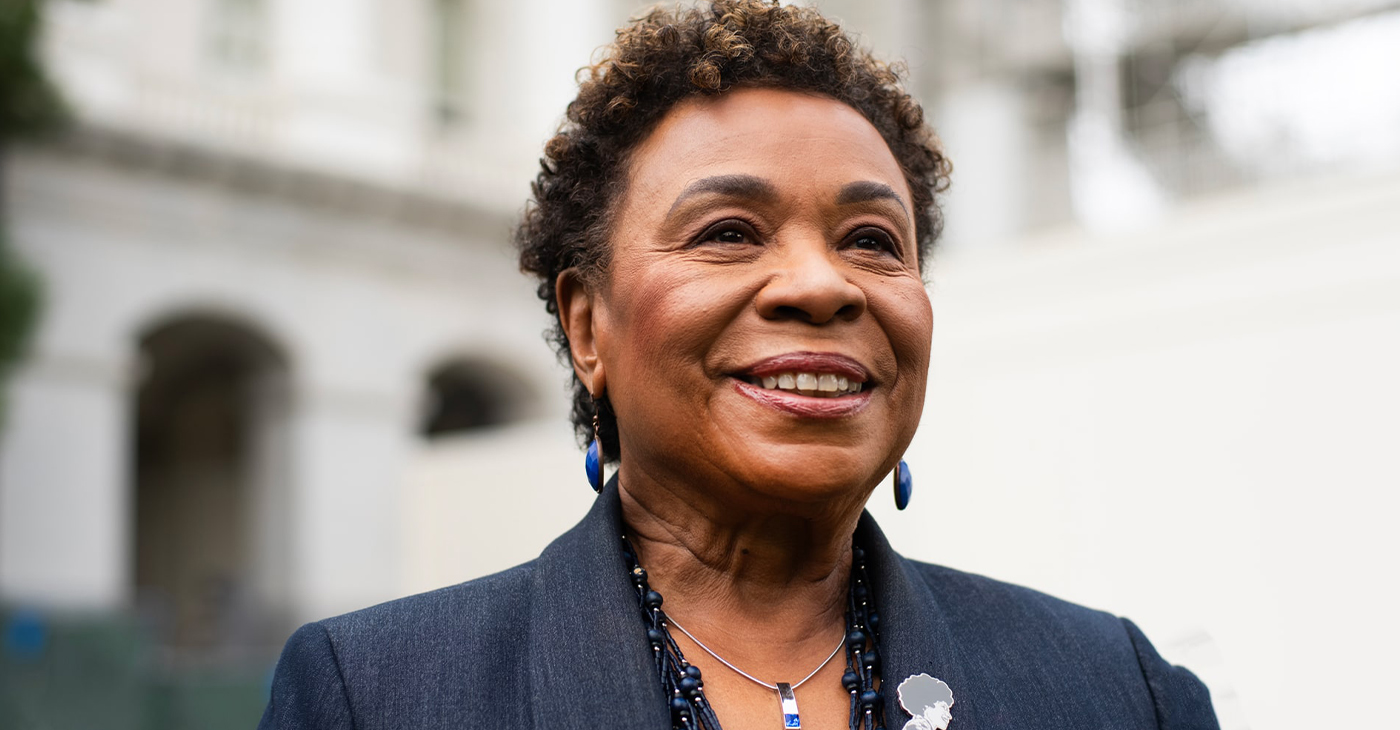
As we end the celebration of Women’s History Month in Oakland, we endorse Barbara Lee, a woman of demonstrated historical significance. In our opinion, she has the best chance of uniting the city and achieving our needs for affordable housing, public safety, and fiscal accountability.
As a former small business owner, Barbara Lee understands how to apply tools needed to revitalize Oakland’s downtown, uptown, and neighborhood businesses.
Barbara Lee will be able to unify the city around Oakland’s critical budget and financial issues, since she will walk into the mayor’s office with the support of a super majority of seven city council members — enabling her to achieve much-needed consensus on moving Oakland into a successful future.
It is notable that many of those who fought politically on both sides of the recent recall election battles have now laid down their weapons and become brothers and sisters in support of Barbara Lee. The Oakland Post is pleased to join them.
Activism
Actor, Philanthropist Blair Underwood Visits Bay Area, Kicks Off Literacy Program in ‘New Oakland’ Initiative
These community activations were coordinated with the San Francisco-based non-profit program “Room to Read.” Ray said he is also donating his time to read and take pictures with students to encourage their engagement and to inspire them to read more. The inspirational book “Clifford Ray Saves the Day” highlights Clifford Ray’s true story of saving a dolphin.
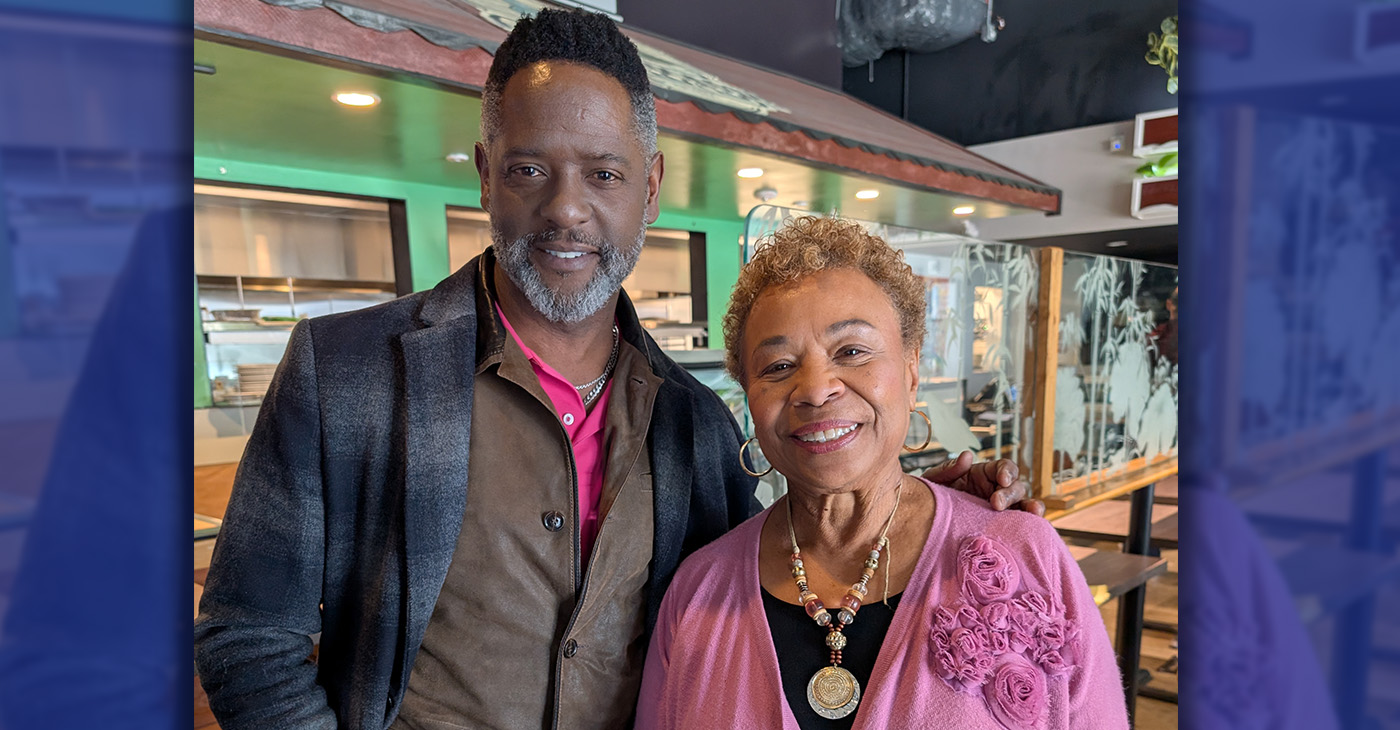
By Paul Cobb
New Oakland Series
Opinion Part 3
The Post mentioned three weeks ago that a number of our local luminaries were coming together to support the “New Oakland” movement. As this current national administration continues to eliminate our “legacy” institutional policies and programs left and right, most communities find themselves beyond “frozen” in fear.
Well, esteemed actor, long-time Bay Area supporter, and philanthropist Blair Underwood returned to Oakland this week to speak with city leaders, community trust agents, students, the Oakland Post, and local celebrities alike to continue his “New Oakland” initiative.
This week, he kicked off his “Guess Who’s Coming to Read” literacy program in some of Oakland’s middle schools. Clifford Ray, who played the center position of the 1975 World Champion Golden State Warriors, donated close to 1,000 books. Ray’s fellow teammate Charles “The Hopper” Dudley also gave Converse sneakers to students.
These community activations were coordinated with the San Francisco-based non-profit program “Room to Read.” Ray said he is also donating his time to read and take pictures with students to encourage their engagement and to inspire them to read more. The inspirational book “Clifford Ray Saves the Day” highlights Clifford Ray’s true story of saving a dolphin.
Underwood also spent quality time with the Oakland Ballers ownership group and visited the amazing Raimondi Park West Oakland community revitalization site. In the 1996 TV film Soul of the Game, Underwood played the role of the legendary first Black Major League Baseball player Jackie Robinson and commended the Ballers owners.
“This group of sports enthusiasts/ philanthropists needs to be applauded for their human capital investment and their financial capital investment,” Underwood said. “Truly putting their money and passion to work,” Underwood said.
Underwood was also inspired by mayoral candidate Barbara Lee’s open-minded invitation to bring public-private partnership opportunities to Oakland.
Underwood said he wants to “reinforce the importance of ‘collaborative activism’ among those most marginalized by non-empathic leadership. We must ‘act out’ our discomfort with passionate intentions to create healthy change.”
Activism
Councilmembers Ramachandran, Kaplan, Unger Identify Funds to Save Oakland Fire Stations
Our budget crisis – one of the worst in Oakland’s history – is compounded by the fact that people do not feel safe coming to Oakland due to our public safety crisis. By investing in our fundamental public safety resources today, we can send a signal to the world that Oakland is open for business. We have such a rich and vibrant culture, arts, and food scene that is worth celebrating – but we can only showcase this if we are able to keep our neighborhoods safe. Having fully functioning fire stations are absolutely essential to these efforts.
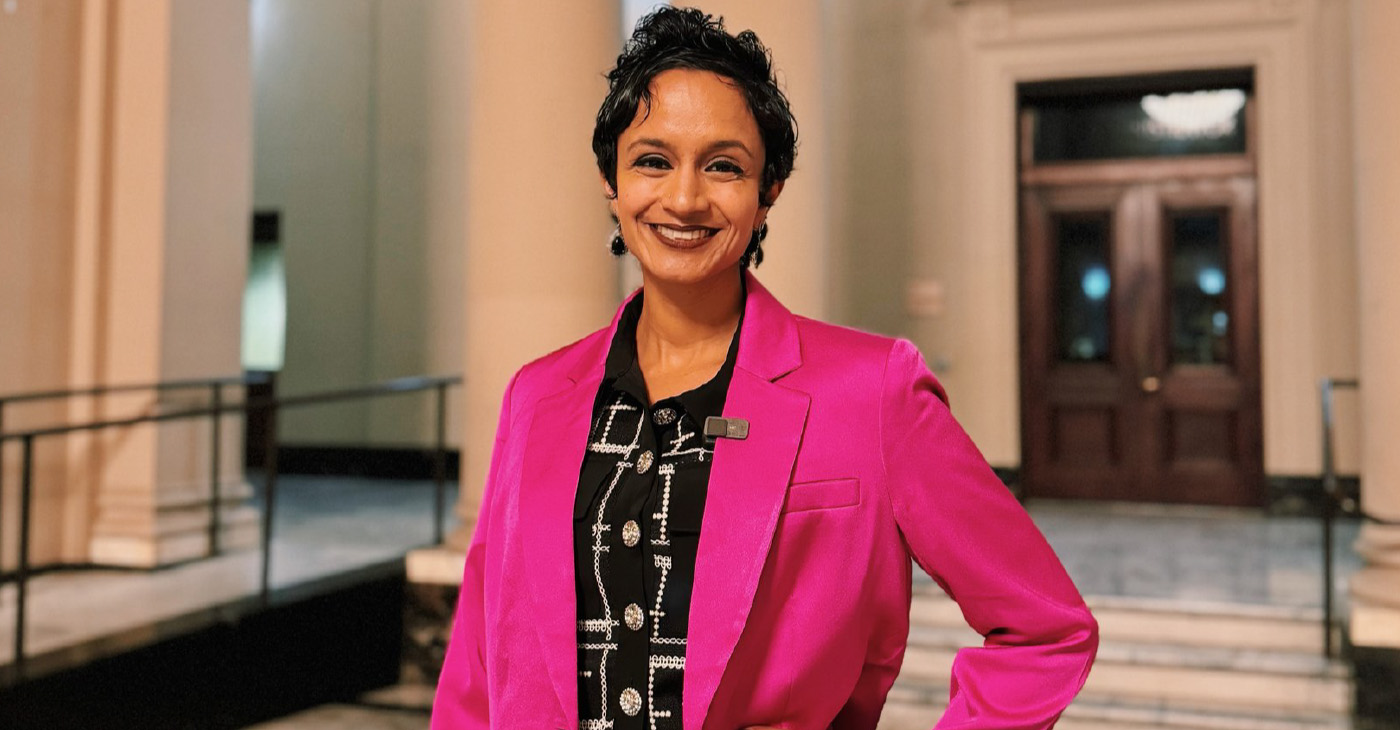
By Janani Ramachandran
There is no greater concern to the people of Oakland today than public safety. Fire stations are the bread and butter of essential city services – and every day that we have stations shuttered, we imperil the lives of our community members. In response to widespread outcry over the current and planned closure of stations, myself, along with Councilmembers Kaplan and Unger, have painstakingly worked to identify millions of dollars of new funding to save our stations. The legislation we introduced on Thursday, February 13th, will amend our budget to prevent the closure of four fire stations that are currently on the chopping block due to our budget crisis and will re-open two closed stations that have already been closed – Station 25 and 28 – in the near future. The resolution that will provide the funding to keep our stations open will go before the full City Council for a vote at our meeting on Tuesday, March 4th at 3:30 PM – and we invite you to join us at City Hall to share your perspective on the topic.
Our budget crisis – one of the worst in Oakland’s history – is compounded by the fact that people do not feel safe coming to Oakland due to our public safety crisis. By investing in our fundamental public safety resources today, we can send a signal to the world that Oakland is open for business. We have such a rich and vibrant culture, arts, and food scene that is worth celebrating – but we can only showcase this if we are able to keep our neighborhoods safe. Having fully functioning fire stations are absolutely essential to these efforts.
With the devastating Los Angeles fire at the top of people’s minds, terrible memories of Oakland’s own wildfires are re-surfacing from the 1991 Oakland Hills Firestorm to the Keller fire just a few months ago – and how essential fire stations are to mitigating these catastrophes. But in Oakland, our fire stations don’t just fight wildfires – they also provide emergency medical services to our most vulnerable constituents, put out structural fires and encampment fires, and much more.
We recognize that there are a number of competing interests and important initiatives fighting for sparse City resources. But from my perspective, core safety services are the most pivotal functions that a City must spend its resources on – especially given the outcry we have heard around fire stations.
The fight to save our stations is not over. The resolution we introduced is a critical first step, and there are hurdles to overcome. If you support keeping our fire stations open, we invite you to be a part of the solution by making your voice heard at the March 4th City Council meeting at 3:30 pm.
-

 Activism4 weeks ago
Activism4 weeks agoOakland Post Endorses Barbara Lee
-
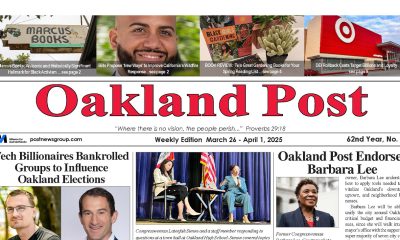
 Activism4 weeks ago
Activism4 weeks agoOakland Post: Week of March 28 – April 1, 2025
-

 Activism3 weeks ago
Activism3 weeks agoOakland Post: Week of April 2 – 8, 2025
-

 #NNPA BlackPress3 weeks ago
#NNPA BlackPress3 weeks agoTrump Profits, Black America Pays the Price
-

 Activism2 weeks ago
Activism2 weeks agoOakland Post: Week of April 9 – 15, 2025
-

 #NNPA BlackPress3 weeks ago
#NNPA BlackPress3 weeks agoHarriet Tubman Scrubbed; DEI Dismantled
-

 #NNPA BlackPress3 weeks ago
#NNPA BlackPress3 weeks agoLawmakers Greenlight Reparations Study for Descendants of Enslaved Marylanders
-

 #NNPA BlackPress3 weeks ago
#NNPA BlackPress3 weeks agoTrump Targets a Slavery Removal from the National Museum of African-American History and Culture












